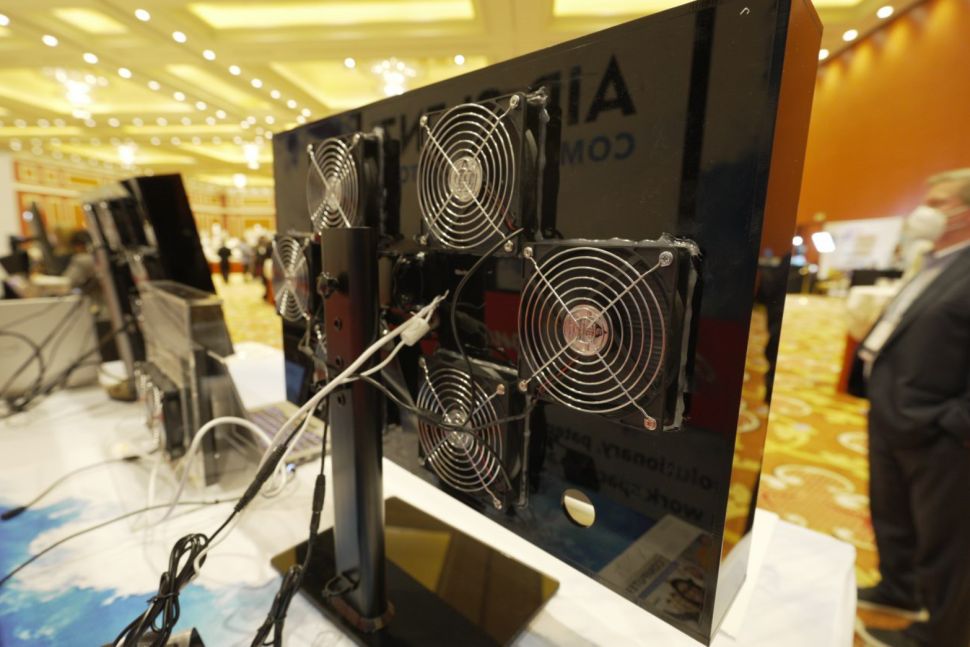Air-Clenz’s technology could be coming to a screen near you.
If you’re worried about the germs your family, friends and (if unmasked) coworkers exhale onto you, just think about your poor monitor. Sitting a couple of feet from your face, your screen is the landing place for many particles you exhale, so it’s a good thing that it can’t catch a virus from you.
But what if your monitor could be part of the solution: capturing the viruses and bacteria you breathe out and then emitting fresh, clean air? That’s an idea being pursued by Air-Clenz Systems, which has technology that builds filtration into your monitor or even a laptop dock.
At CES this past week, Air-Clenz showed off a pair of monitors which had been modified to use its filtration system. However, the company has no intention of entering the monitor business. Hence, its demo units were off-the-shelf screens from LG and Acer, which were modified with a secondary, extra-thick bezel that sucks in particles and spits fresh air out of a set of fans in the rear.

We spoke with Air-Clenz Systems founder Dr. Ronald Blum and CEO Stuart Sheldon prior to CES and they explained that the company’s goal is to license the filtration technology to a hardware vendor who can build it into new monitors. Air-Clenz is not a manufacturer, so a partner would buy the IP and then use it to produce the monitors. They also noted that final products might have fewer fans and filters than the prototypes they showed at CES. The bezels would probably also be much thinner if integrated at manufacturing time.
Though they showed off monitors and a laptop dock at the convention, company execs say that the technology could be built into other devices as well. On their site, they show images of air filtration boxes that could be used on each desk in an elementary school classroom or each seat in a cafeteria.
According to Air-Clenz, the technology can filter out 99.97 percent of cough droplets and aerosols. The company also touted a third-party analysis conducted by Engineering Company Resolved Analytics which showed that the Air-Clenz Computer Monitor would capture and filter roughly 95 percent of a user’s exhaled air.
We asked Aaron Collins, an engineer who has developed aerosol measurement tools and currently runs a popular YouTube channel where he benchmarks masks, for his opinion of the technology, based on what we know so far. Collins told us that, indeed, a monitor with this technology should be able to suck in all the particles that hit the screen. However, he posited that, because of buoyancy and other air movements, some exhaled particles would not make it to the screen.
“More clean air in indoor settings is always good,” he said. “But there is no published information on the flow rate so it’s hard to say how effective a device like this is. Additionally I don’t see sufficient evidence of either empirical testing with a real world device, or CFD simulations which includes buoyancy and office/indoor air currents, that support that this is more effective than just a standard portable air cleaner.”
If we do assume that the AIr-Clenz Monitor captures 95 percent of exhaled air, it would still not be a replacement for masks, because people don’t stare straight at their screens 100 percent of the time. However, in an environment where users don’t wear masks or have to take them off to eat, active air filtration could keep some folks from catching illnesses from their coworkers, whether those illnesses are COVID-19 or the common cold.
It almost goes without saying that employee sick days, no matter the cause, have an extremely negative effect on any company’s bottom line. A pre-COVID study showed that businesses lose $150 billion dollars a year in productivity costs due to illnesses spreading around the office. In another pre-COVID study, 70 percent of workers surveyed said they would come into work while sick, which means that any office could turn into a petri dish.
And building the air filter right into the monitor could make a lot of ergonomic sense for businesses or schools where desk space is too tight to accommodate a standalone air purifier on every desk. The actual cost of adding Air-Clenz technology to a monitor is still TBD, but Sheldon said that the price premium would be less than a company loses from one employee sick day.
